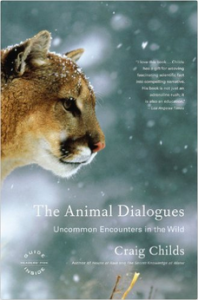The tale is an old one: a thirsty raven drops stones into a pitcher to raise the water level so she can drink. The story was told by Pliny the Elder, a naturalist in the Roman Empire of the first century, and he reported it as an Aesop’s fable, which basically means that the story was ancient already in Pliny’s time. Pliny ended his tale with the now-famous moral: “Necessity is the mother of invention.”
This week the BBC reports that rooks, a cousin of ravens, actually do use stones as tools to reach a treat.
A team of four British scientists set up a situation in which rooks were shown a worm floating just out of reach in a tube of water. Given a pile of stones, Connelly the Rook hopped right to it, dropping stones in the tube one by one until he could reach the worm:
Another rook, Monroe, faced with the same problem, chose the biggest stones first, to do the job with the least amount of work:
Note: My thanks to Boria Sax for posting the story and the BBC link on the H-Net discussion list NILAS, Nature in Legend and Story.
Humans have known for a long, long time that birds of the corvid family—ravens, crows, jays,  magpies, and nutcrackers on this continent, also rooks and jackdaws in Europe—are smart. But to appreciate just how closely the concerns of ravens and crows are to those of humans, you might want to read nature writer Craig Childs’s chapter on ravens in his book The Animal Dialogues.
magpies, and nutcrackers on this continent, also rooks and jackdaws in Europe—are smart. But to appreciate just how closely the concerns of ravens and crows are to those of humans, you might want to read nature writer Craig Childs’s chapter on ravens in his book The Animal Dialogues.
The story opens with Childs hiking in the desert:
When the first raven came it was alone, a piece of blackness laboring across a cold dawn sky. . . . It was a big bird, a sorcerer wearing sleek black robes, its two talons tucked against its body as if each grasped a marble. It altered its path slightly, making a jog around me, wings laid out as it banked twenty feet off the ground. It obviously wondered what I was, and what I was doing here, one eye tagging me as it circled. It was close enough that I saw clearly into that one dark eye, the one that observed me with incredulous focus, as if to say You again.
Following the raven, Childs finds a scene he would have expected only from humans. But, he says,
I am always prepared for the impossible from ravens. . . . Ravens pull up baited fishing lines by stepping on the line, reeling in slack with their beaks, stepping on the line again, and finally pulling in the fish. They poke sticks into bug holes, bend wire to hook meat from between cracks, unzip backpacks, and open ice chests.
From this catalog of innovations, it sounds like the test set up for Connelly and Monroe was a piece of cake.
To find out what the ravens were up to in Childs’s story, you’ll have to read his book. It’s a moving chapter about feelings, rituals, and how much humans long to recapture the kinship we know in our heart of hearts is waiting there to be rediscovered.
For some cool videos and pictures of tool-making crows, see this story from the BBC: “Meet the Brains of the Animal World.”
I have watched the neighborhood crow family teach each other tasks in suburban Ventura, CA. The “elder teacher” crow picks up nuts from our large California Nutmeg tree in the front of our house. He/she watches where the cars drive on the streets; they are usually interested in larger cars, particularly the SUVs. Then, the teacher places the nutmeg fruit on the road where the wheels tend to drive. The crow teacher and pupil watch the road from a tree branch or even the sidewalk (probably to study the results closely). The mindless auto pilot drives the car over the precious nut, and cracks it open. The two crows fly down and saunter over to the nut, and share in the meat of the nut; typically, the teacher eats first. Then, the student crow gathers and places another nut in the path, and eventually reaps similar benefits. I have also watched them do this with walnuts (gathered from someone’s kitchen? Who knows?) Less work, more crow entertainment, easy to eat goodies, one of the more positive uses of SUVs!
Wow! What wonderful sleuthing you’ve done, Barbara! And what a piece of tool using by crows! Not just any tool, but the biggest ones around! Thanks for drawing our attention to how the birds, and especially the crows and ravens, are always watching us, always interacting with us, even if we’re oblivious.